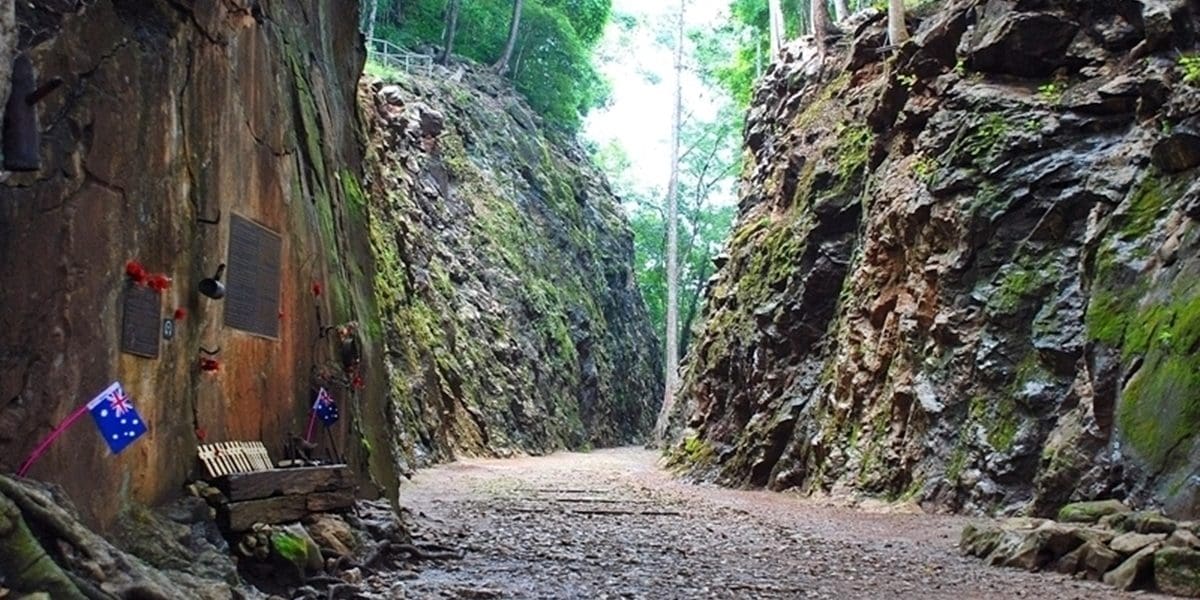In the ’80s, a handful of Australian survivors rediscovered the overgrown Hellfire Pass section of the Death Railway. They then lobbied to turn it into the memorial that it is now. Their initiative contributed to the creation of one of the most sobering and evocative sites on earth for travelers interested in the appalling events of World War II.
The Hellfire Pass got its name from the sight, ghastly reminiscent of scenes from hell, of the emaciated prisoners working overnight under torchlight. Therefore, the steep rock walls epitomize the captivity, deprivation, torture, and deaths of thousands of POW and Asian civilians laborers. All of them constrained to build the infamous Death Railway to help the Japanese in their effort to invade Burma. Nowadays, you can walk through tight twenty-six meters deep trench in the Tenasserim Hills along a five hundred meters track.
The Hellfire Pass Museum is co-sponsored by the Royal Thai Armed Forces Development Command and the Australian government. The top-rated air-conditioned museum has plenty of videos, photographs, drawings, tools, and testimonies for you to roam through. Courtesy of the portable audio headset provided, you can share the misery and memories of those years and hear directly from survivors who describe the inhumanity they had to endure.
From the museum, a walking trail (few hundred yards) leads you to the Hellfire Pass, also known as Konyu Cutting. You can also keep on walking down the abandoned railway line, which is more or less a five kilometers hike. That route will take you to a stunning valley, other rock “cutting” railway passes, and a couple of trestle bridges.
Most travelers certainly enjoy visiting the River Kwai Bridge and Don Rak War Cemetery sites. However, many feel there are more powerful and intense emotions at the Hellfire Pass.


